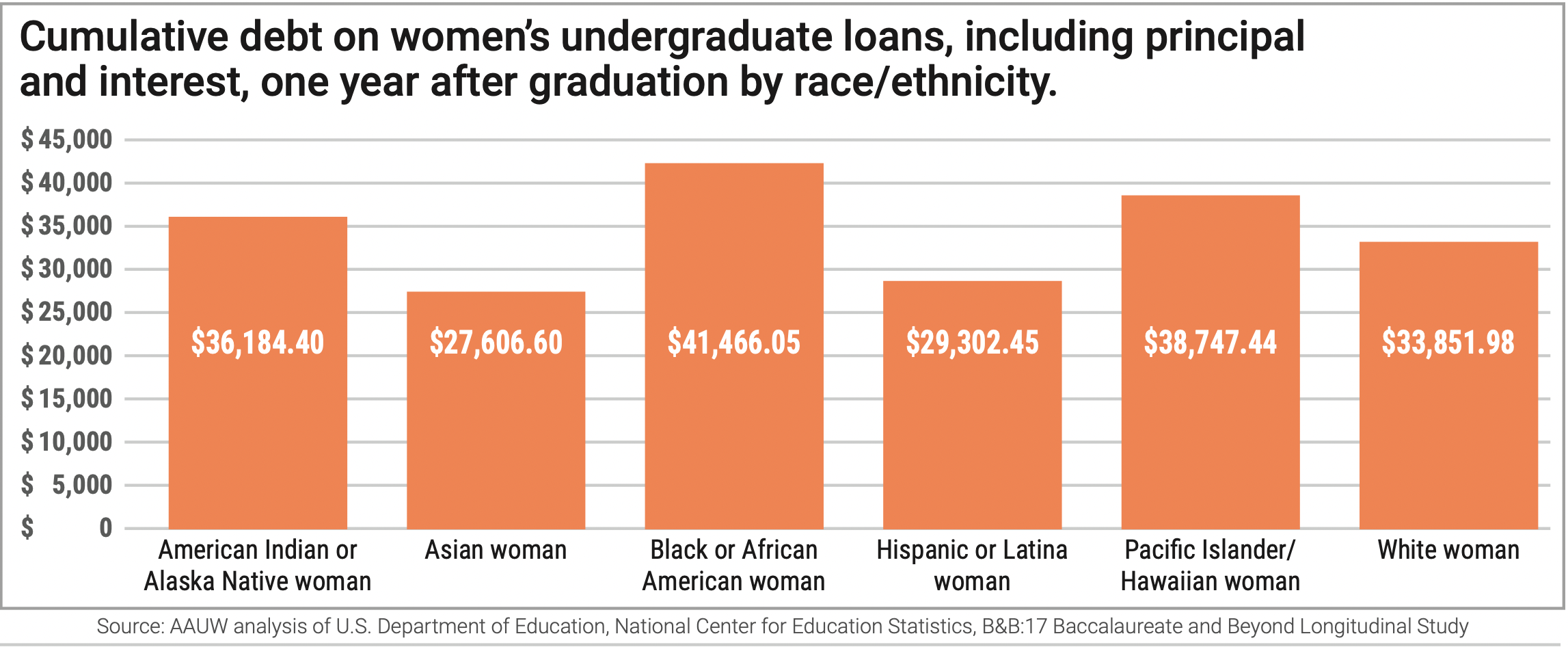
- The American Association of University Women compared women's student-debt burdens to their income.
- Black women have more student debt than white women, highlighting the racial wealth gap.
- AAUW recommended simplifying repayment options, which the Education Department is pursuing.
Americans hold a $1.7 trillion student-debt burden, but new data indicates that women bear a bigger portion of that burden, which is exacerbated by gender pay gaps.
The American Association of University Women, a nonprofit that advances equity for women, released a new report that found that among those taking out student loans, women borrowed an average of $31,276 while men borrowed an average of $29,720. Women also have more difficulty paying off those loans, given that women who graduate with a bachelor's degree expect to earn $35,338 their first year out of college – 81% of what men expect to earn, the report said, citing the latest available figures.
The report said it was difficult, and sometimes impossible, for women to make ends meet with such low salaries relative to expenses.
"A year after college, women spent an average of $920 per month on housing, $396 per month on a car loans or leases and – for the 16.3% of women who have a child – $520 on child care, according to the most recent data," the report said. "When you factor in an average of $307 per month on student loan payments, the numbers add up to an unsustainable budget."
Black women hold more of the student-debt burden than white women. The report said that one year after graduation, Black female borrowers owed $41,466.05 in student debt on average, compared with $33,851.98 for white female borrowers.

American Association of University Women
In April, 36 civil-rights organizations called for student-debt cancellation to close the racial and wealth disparities in the country that they said put borrowers "on the brink of financial devastation."
The AAUW recommended various measures to respond to this crisis, including canceling student debt in an equitable way, simplifying repayment approaches, and eliminating the pay gap.
Insider previously reported that the Education Department was working toward improving student-loan-forgiveness programs, but the timeline for doing so, and details on what the improvements would entail, are vague. A department representative told Insider that further details would be provided once the agency received feedback from stakeholders.
"The Administration is committed to ensuring borrowers are able to access the loan relief to which they are entitled, and we look forward to working with the field to design and implement much-needed improvements," the representative said.
The left-leaning Roosevelt Institute recently found that despite the popular argument that canceling debt would benefit the rich, Sen. Elizabeth Warren and Senate Majority Leader Chuck Schumer's plan to cancel $50,000 in debt a person would actually benefit the low-income borrowers more.
"The time is now," Warren told Insider last week. "We know what the problem is: Student-loan debt is holding back tens of millions of people across this country. People who can't buy homes, people who can't buy cars, people who can't start small businesses. We need to cancel that student loan debt, not only for those people individually, but for our whole economy."
